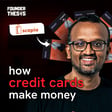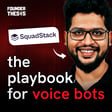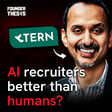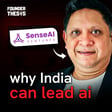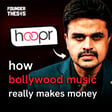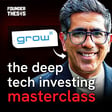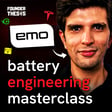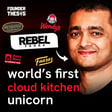
Deals to Degrees: Serial Entrepreneur Ashish Munjal’s journey from Crown It to Sunstone
"Founders often wear a mask of 'irrational optimism' for their team; a necessary front when leading through uncertainty."
This insight from Ashish Munjal delves into the often unspoken psychological aspect of entrepreneurship, where maintaining a strong, positive exterior is crucial for team morale and navigating the startup journey's inherent challenges, even when founders internally grapple with difficulties.
Ashish Munjal is the Co-Founder & CEO of Sunstone, one of India's leading higher education service providers. Recognized in the Times 40 under 40 (2022), he is steering Sunstone to impact nearly 20,000 students across 14 cities and over 27 colleges, with projected gross sales of around ₹300 crore by the end of the year discussed in the podcast. His mission is to make quality, job-oriented higher education accessible, particularly for students in Tier II & III cities.
Key Insights from the Conversation:
👉Viral Growth & Engagement: How Crown It achieved massive user engagement (50% MTU/MAU) with near-zero paid marketing, relying heavily on organic referrals.
👉Bold Business Models: The strategic thinking behind Sunstone's initial "Pay After Placement" model to build trust and cut through market clutter.
👉The Power of Pivots: Lessons from Crown It's evolution (deals to data monetization, then enterprise) and Sunstone's strategic shifts (like removing pay-after-placement for UG courses) for long-term sustainability.
👉Offline-First in EdTech: How Sunstone's offline-centric approach proved resilient and attractive to investors, especially when the online EdTech wave faced scrutiny.
👉AI in Operations: Practical examples of how AI is already being used at Sunstone for lead qualification, CV automation, and even creating initial drafts of educational content.
Chapters:
00:00:00 - Introduction: The Entrepreneurial Itch
00:01:49 - The Crown It Journey: Building a Viral Deals App & Growth Hacks
00:15:35 - Challenges of Gamified Rewards & Why Crown It Pivoted
00:40:47 - The Shift to Education: Identifying the Core Problem for Sunstone
00:48:44 - Sunstone's Innovative Higher Education Model
00:56:19 - "Pay After Placement" & Navigating Sunstone's Early Challenges
01:06:56 - Sunstone's Unique Operations: The University Track vs. Sunstone Track
01:13:18 - Cracking Student Acquisition & The "Easier" Part: Placements
01:23:08 - Funding Journey: Navigating EdTech Investor Waves
01:27:48 - Lessons as a Two-Time Founder & Angel Investing Thesis
01:38:10 - Signalling Credibility to Investors: Early Stage vs. Series A
01:42:52 - AI in Action: Automating Operations & Replacing Resources
#FounderThesis #EdTechIndia #HigherEducation #StartupIndia #Entrepreneurship #IndianStartups #SerialEntrepreneur #StartupLessons #GrowthHacking #EdTechTrends #BusinessPivots #VentureCapital #AIinBusiness #Podcast #InnovationInEducation #leadershipjourney
Disclaimer: The views expressed are those of the speaker, not necessarily the channel.





